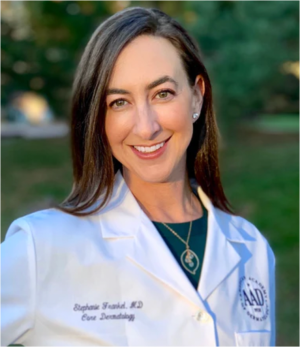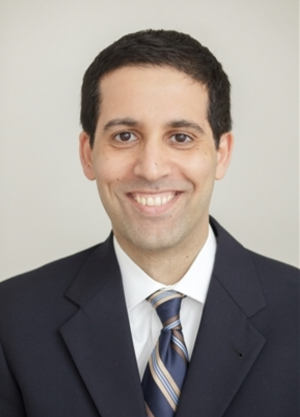
The best sunscreen is the one you have with you when you need it...so keep sunscreen available in your car, purse, golf bag, ski bag, tennis bag and use it any time you are outdoors.
There are a wide range of quality products, but my favorite are "sunblocks" or those offering "physical" sunscreen with inert ingredients such as titanium and zinc. These physical sunscreens have few ingredients and block all types of UV radiation (UV-A that leads to signs of aging skin and UV-B that causes sunburn, and UV-C that is the most likely to lead to skin cancer, but is usually blocked by the atmosphere).
Don't be shy...slather it on and be sure to re-apply often. (I'm surprised by how many people will religiously apply sunscreen at the beginning of an outdoor activitiy and then fail to apply any more during the day, expecting it to last all day. It does not)

In terms of everyday use, SPF 15 is ideal for most skin types. If you are going to be in the sun longer than two hours, sunscreen must be reapplied to afford adequate protection. If you anticipate participating in an activity outdoors for several hours, SPF 40 or higher is recommended and should also be reapplied every few hours.

My patients often ask me what they can do to make/keep their skin healthy. Without question, the number one thing we can do is use sunscreen-every day.
But it has to be a sunscreen that does a good job blocking UVA. UVA penetrates deeply into the skin, causing virtually all the "aging' of our skin and most skin cancers. It also goes through windows, which is why we need to be using it daily. Eleven minutes of UV exposure does more damage than the skin can repair in 24 hours.
After UVA-blocking sunscreen, using topical vitamins such as A, C, and E can help protect and repair the skin when used daily. As we age, it also becomes more and more important to moisturize because dryness is a normal consequence of aging, and it's essential to help maintain that surface skin barrier. Dryness is also worse during cold winter months, so more moisturizing may be necessary then.
As far as procedures to keep the skin healthy, Forever Young BroadBand Light (BBL) is my favorite. Research from Stanford University has shown that regular treatments reverse the DNA damage from sun exposure or natural aging!! The treatments can be done in the office in half an hour without any anesthetic or downtime.

We recommend broad spectrum sunscreens that have UVB and UVA protection. You can find this written clearly on the bottle. It is best to wear at least SPF 30 and above and to reapply sunscreen every 2-3 hours. To adequately protect your skin, you need to use 1 oz of sunscreen (about a shot glass full).
Sunscreen consistency and texture is a personal preference. It’s important to find one that suits your preferences.
We understand that one of the best things about living in Colorado is enjoying the outdoors! To prevent unwanted harmful effects of UV exposure we recommend:
- Avoiding direct exposure by seeking the shade, especially during peak UV hours between 10AM and 4PM
- Regularly use broad spectrum sunscreen SPF 30+ (even on cloudy days!). Reapply every 2-3 hours.
- Wear sun protective clothing, including a wide brimmed hat. Clothing with the best sun protection will be marked with a “UPF” rating
- Do not get sunburned
- Never use a tanning bed

The physicians at Dermatology Care of Charlotte recommend regular use of broad spectrum sunscreens for sun exposed skin to prevent skin cancer and premature aging of the skin. A sunscreen should be at least SPF 30, however, higher numbers do not protect more as long as it is applied properly. A sunscreen should also be broad spectrum (able to protect against both UVA and UVB). To ensure broad spectrum coverage, one must make sure that the sunscreen contains at least ONE of the following: avobenzone, Mexoryl, zinc oxide or titanium dioxide. Do not buy it if it doesn’t contain one! For those who have sensitive skin, stick with ones that contain only zinc or titanium.
Most people do not apply enough sunscreen and apply too infrequently. Approximately one ounce (size of a shot glass) is recommended for an average sized adult to cover the entire body. This means that a typical tube of sunscreen should last for only 3 to 4 applications. Also, because sunscreen is slowly broken down by sunlight, you should apply sunscreen every 2 to 3 hours even if you are not sweating or swimming. Lastly, sunscreens should be combined with protective hats and other clothing and one should try to avoid the peak UV hours between 10 a.m. – 3 p.m.
Lately, there has also been controversy about the health benefits of vitamin D and whether sunscreens block us from getting the vitamin D that we need. We recommend that you continue to apply sunscreens but discuss with your doctor about having vitamin D levels drawn if you might be at risk of being vitamin D deficient (little daily exposure to UV light). In summary, the doctors at Dermatology Care of Charlotte recommend to apply sunscreen prior to sun exposure and reapply every 2 to 3 hours. Avoid mid-day sun exposure and cover up with clothing when possible. Consider oral vitamin D supplements if strict sun protection practices are being used consistently. Ask your dermatologist if you have additional questions.



Before you slip over to the beach to catch up on your tan this summer, don’t forget to slop on the sunscreen. Remember that protecting yourself from sun exposure is the best way to prevent skin cancer and premature aging of the skin, such as unwanted wrinkles and age spots.
I recommend generously applying a water-resistant, broad-spectrum sunscreen— that protects against both types of ultraviolet radiation (UVA and UVB) — with an SPF 30 or higher, in conjunction with other sun-safe practices such as limiting sun exposure, seeking shade, and wearing sun-protective clothing, hats and sunglasses.”
But what about vitamin D? Many people worry that sunscreen will block vitalizing vitamin D from being absorbed. Even though sun exposure stimulates the production of vitamin D in the skin, there are many other, safer ways to get the vitamin without putting yourself in harm’s way. Dr. Siegel recommends that individuals who are concerned about their vitamin D intake “should discuss obtaining sufficient vitamin D from foods and/or vitamin supplements with their doctor.”
Dr. Siegel provided his expert opinion about sunscreen ingredients, particularly those that have received attention in the press.
1) Oxybenzone is one of the few FDA-approved ingredients that provides effective broad-spectrum protection from UV radiation. Although there has been some concern mentioned in the press about possible long-term side effects from using sunscreens with oxybenzone, Dr. Siegel pointed out that “peer-reviewed scientific literature (available to date) and regulatory assessments from national and international bodies do not support a link between oxybenzone in sunscreen and hormonal alterations, or other significant health issues in humans. He added that “the FDA has approved oxybenzone in sunscreen for use on children older than 6 months.”
2) Retinyl palmitate, a form of vitamin A (retinol), is used as an ingredient in some sunscreens as an antioxidant to prevent degradation of the product and maintain efficacy. There has been recent attention about possible side effects from retinyl as a result of in vitro (test tube) studies and one unpublished report using mice. However, Dr. Siegel stated that“there is no published evidence to suggest either increase the risk of skin cancer in these patients. In fact, oral retinoids are used to prevent skin cancers in high-risk patients.”
3) Nanotechnology is being explored as a means to give sunscreen greater broad spectrum protection from UVA and UVB rays. Titanium dioxide and zinc oxide tend to leave a white residue on the skin when used in a regular formulation that contains large particles. When these ingredients are converted into smaller molecules, nanoparticles, they appear to vanish on the skin, do not leave a residue, and retain and enhance their ability to block UVA and UVB light. “Considerable research on the use of nanoparticles on healthy, undamaged skin has shown that the stratum corneum — the outermost layer of the skin — is an effective barrier to preventing the entry of nanoparticles into the deeper layers of the skin. Titanium dioxide and zinc oxide have a long history of safe use in sunscreens and offer good options for broad-spectrum UV protection.”
Everyone wants to have a fun and safe summer. By adding sunscreen to your daily routine, like brushing your teeth and washing your hands, the small step can have a big payoff and add years to your life down the line.

Chemical blockers are composed of several different chemicals that each absorbs various wavelengths of UVA, UVB rays, or a combination of both. These chemicals soak into the skin, thus need to be applied 20-30 minutes prior to turning the light energy into vibrational or “kinetic” energy, then release that energy as heat energy into the skin.
As the molecules absorb light energy and vibrate, they gradually degrade or fall apart – therefore they need to be applied frequently. Some safety concerns have been raised about the safety of chemical sunblockers.
The Environmental Working Group (EWG) raised concerns about oxybenzone causing cancer after long term use. Although this may represent a theoretical concern for infants that have never been exposed to sunscreens before, for adults, we have been exposed to oxybenzone for years, thus “the horse is out of the barn” and the benefits of skin cancer prevention greatly outweighs any minimal risk of using oxybenzone.
If you have a small child, you may want to consider using only physical blockers to avoid long term exposure to chemical sunscreens.

Schaumburg dermatologist Dr. Jeffrey Hsu of Oak Dermatology provides a summary of the factors to consider when selecting a sunscreen for protection from the damaging effects of UV radiation.
Dr. Hsu and his colleague Dr. Ashish Bhatia describe the differences between chemical sunscreen and physical (zinc oxide, titanium dioxide) sunscreen and speak to the benefits of a physical sunscreen.
They also introduce an interesting brand of sunscreen (ISDIN), previously available only in Europe, that includes an enzyme that helps to repair the skin of any UV damage.

Not all sunscreens are created equal. Many sunscreens on the market offer only UVB protection without any UVA protection. Some sunscreens that claim broad spectrum protection against both UVA and UVB may not offer adequate UVA protection. This is because there is no universally accepted UVA rating scale in place as there is for UVB, i.e. the SPF rating scale. UVA is just as important as UVB, both cause skin cancers, and UVA is primarily what leads to accelerated photo- or sun-induced aging of the skin.
Here is what to look for when evaluating sunscreens:
A High SPF rating of at least 30 for UVB protection when planning outdoor activities. An SPF of 15 is adequate for daily routines involving minor incidental UV exposure.
A broad spectrum UVA/UVB water resistant sunblock which containsMexoryl is superior to a non stabilized chemical sunscreen which degrades readily with UVA exposure. Another sunscreen agent that is highly photo stable is zinc oxide. When this is micronized, it is invisible or cosmetically acceptable.
Because evaluating sunscreens can be confusing, here are some specific brand recommendations available in this office:
Elta sunblocks: these contain Z-cote and are cosmetically elegant formulations that are non comedogenic, hypoallergenic and effective lightweight highly absorbent moisturizers. Coupled with UVB screeners and Z-cote, Elta brand products offer complete broad spectrum UV protection.
Anthelios: This FDA approved sunscreen is an effective daily sunscreen and moisturizer. It contains Mexoryl, a unique highly photostable UVA protectant that is combined with stabilized avobenzone for complete UVA protection. It also contains multiple UVB sunscreens and offers an SPF of 60. Anthelios is available as a fluid for the face with a matte finish and cream for the face or body.
Melashade E: is a combination of micronized Titanium andZincoxides, fortified with the powerful anti-oxidant Melanin, Vitamins C, E and ferulic acid ester in anemollient silicone elastomer vehicle. It contains Petrolatum and Barrier Repair Lipids making this ideal daily facial photoprotection for patients with drier skin types.

Any sunscreen is better than going without, but some types of sunscreen may protect you better or be more suited to your needs than others. Finding the right sunscreen is partly finding one with the right consistency for your skin type. Those with oily or acne-prone skin may want to go with a less greasy sunscreen, for example. Also, anyone planning to go into deep water or to sweat may want a water-proof or water-resistant formula. But more importantly, it is crucial to get a sunscreen with a high SPF factor to help shield you from Ultraviolet (UV) radiation.

For children, stick with the zinc and titanium sunscreens as they are more gentle.
Sunscreens with an SPF above 50 are probably not helpful since the correct application of a sunscreen with SPF 30 would protect most people all day.
Visit Dr. Pace's webste at Pace Dermatology Associates

Protecting your skin from the sun is a safe thing to do. UV rays are a known carcinogen. Sunscreen is an important tool to help protect your skin from the sun, but remember that not all sun protection comes in a bottle. Use of protective clothing, hats, and sunglasses, as well as seeking shade and avoiding the sun between 10am and 4pm are all tools that one can utilize to help minimize harmful UV rays.
When choosing a sunscreen, we encourage our patients to use SPF 30. This will protect 97% of UV rays. Many of our patients have expressed concerns regarding some sunscreens that may contain harmful chemicals. For sun safety tips and a list of the safest sunscreens to use, according to a 2009 report by the environmental working group, we refer our patients to the website SunSmartSkinSafe.com.

I like to take a pragmatic approach to sunscreen use. Especially for men, the first step is to own some sunscreen and have it where you need it! Put some in your golf bag or with your running shoes or in your car (or all of the above).
The second step is to try a few different brands so you find at least one that you like. For example, my wife likes ones that are more moisturizing...but I like some types for my face and other for my arms and body that have more hair! I also like using hats and sun protection clothing so I don't need quite as much sunscreen!
Finally, the other key, now that you have what you need, is to get in the habit of using it. A little bit of sun is fine for vitamin D, but taking extra vitamin D supplements can also make sense for some people. In the end, life is too short, so enjoy the day, don't be afraid of going outdoors, just protect yourself!
Source: Vivacare
Last updated : 2/10/2023